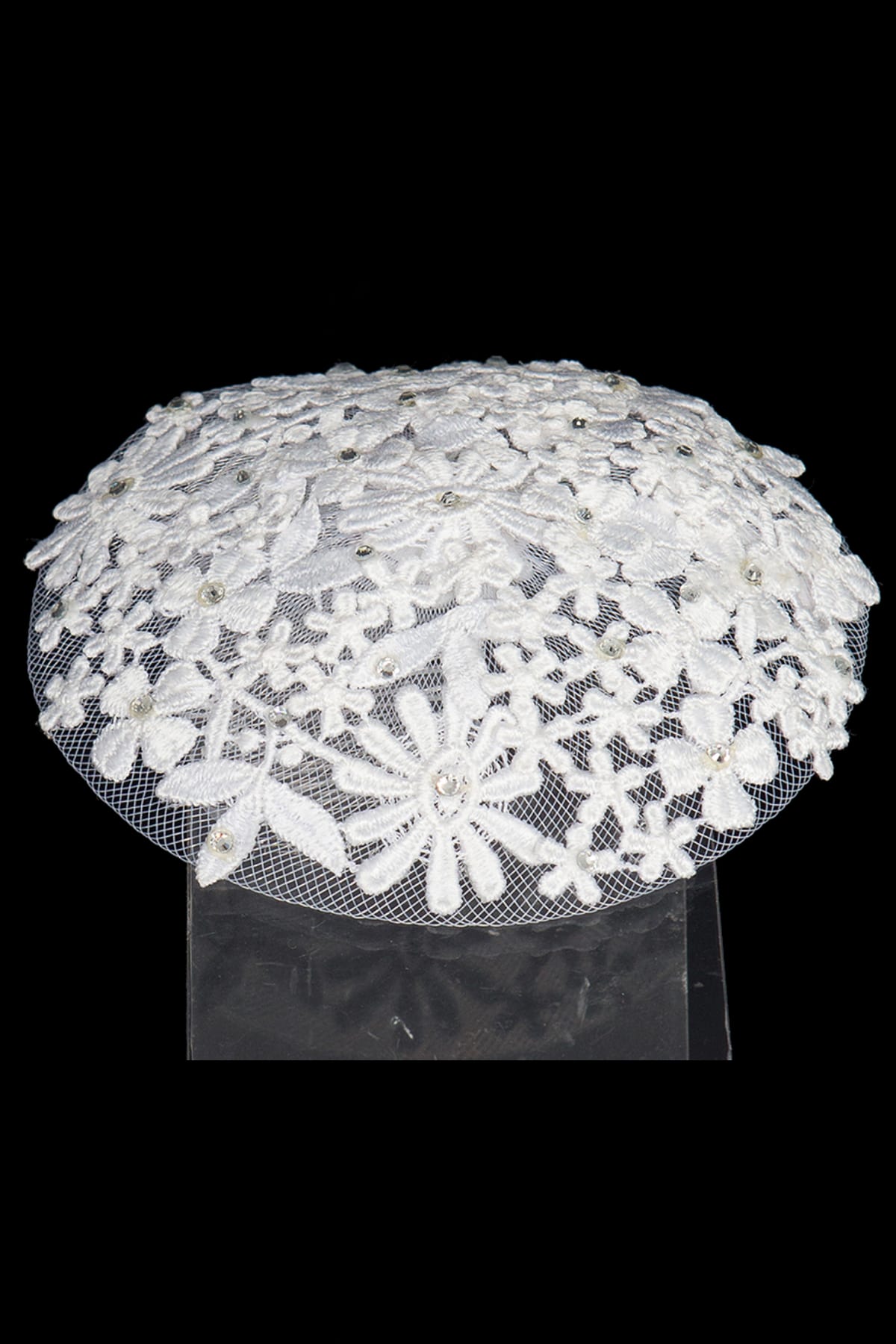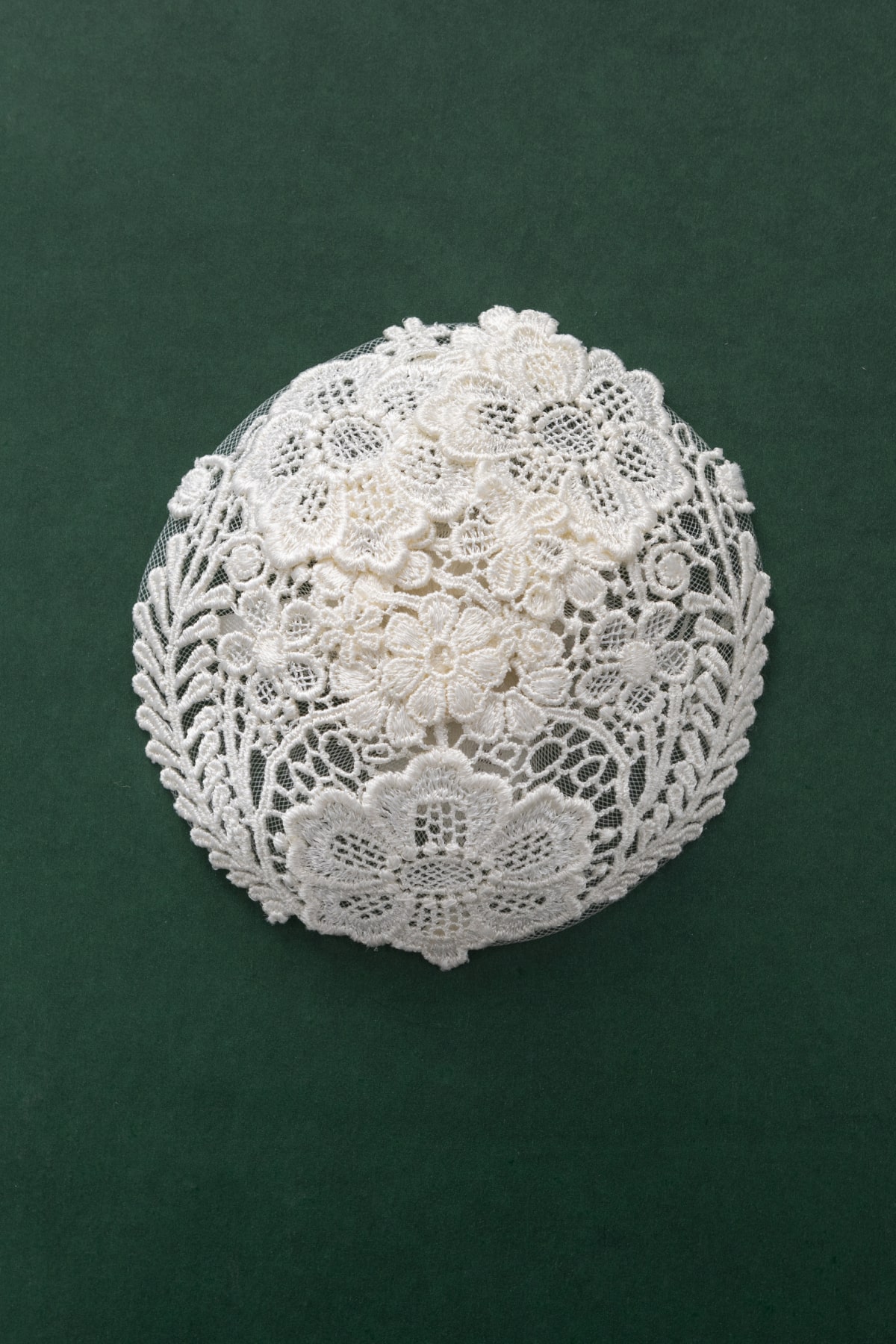
A Brief History of Handmade Womens Kippah
At Queen Esther Hair Covers, we’ve been crafting exquisite handmade womens kippah for over three decades. Our dedication to tradition is rooted in a rich family history that aligns with our Jewish heritage. Handmade kippot, as they’re commonly known, have evolved over the years, yet they still symbolize respect and modesty within Jewish customs.
Historically, kippot were predominantly worn by men, but modern times have seen an embrace of this garment by women, creating a vibrant niche market. This evolution underscores the dynamic nature of Jewish traditions and how they adapt to modern sensibilities.
Materials and Techniques for Handmade Womens Kippah
The art of making a handmade womens kippah involves a meticulous choice of materials and techniques. For instance, we use high-quality cotton, silk, and wool to ensure durability and comfort. The beads and sequins add an extra layer of elegance, often chosen to reflect personal tastes or to align with specific events.
Crochet and embroidery are the primary techniques employed in crafting these kippot. Each piece is hand-stitched, allowing for unique patterns and personal touches. The process requires patience and precision, ensuring every kippah is a masterpiece.
Our artisans are skilled in blending traditional designs with modern aesthetics, thereby creating kippot that are not only beautiful but also culturally significant. This blend of old and new ensures our handmade womens kippah are cherished by the wearer.
How to Choose the Perfect Handmade Womens Kippah
Choosing the right handmade womens kippah can seem daunting given the plethora of options available. Here’s a simple guide to help make the process easier:
- Identify the Occasion: Determine if the kippah is for daily wear or a special event.
- Material Preferences: Consider what feels comfortable against your skin. Cotton is airy, while silk offers a sheen.
- Design Selection: Opt for a design that resonates with you. Floral patterns are popular, as are abstract designs.
- Color Coordination: Ensure the kippah complements your existing wardrobe or the outfit for the occasion.
- Budget Considerations: Prices vary based on materials and complexity, so set a budget that works for you.
Ultimately, the right kippah is one that makes you feel confident and aligns with your personal style.
What Makes Handmade Womens Kippah Special?
The allure of a handmade womens kippah lies in its ability to blend tradition with personal expression. Each kippah is a testament to the artisan’s creativity and dedication, crafted with love and attention to detail.
What sets these kippot apart is their bespoke nature. Unlike mass-produced alternatives, handmade versions allow for customization–be it in color, pattern, or material. This personalization is what many of our clients cherish, as it transforms a simple accessory into a meaningful piece of art.
Moreover, supporting artisans by purchasing handmade kippot ensures the preservation of craft skills that have been honed over generations. It also aligns with sustainable fashion principles, emphasizing quality and ethical production methods.
Frequently Asked Questions About Handmade Womens Kippah
Q: Can a handmade womens kippah be worn in formal settings?
A: Absolutely. Handmade womens kippot are versatile and can be worn both in casual and formal settings. Their intricate designs and high-quality materials such as silk or finely crafted crochet make them suitable for events like weddings or religious ceremonies.
Q: Are there specific care instructions for handmade womens kippah?
A: Yes, due to their delicate nature, handmade womens kippot should be gently hand-washed and air-dried. Avoid exposure to harsh chemicals or direct sunlight to maintain their color and texture.
Caring for Your Handmade Womens Kippah
Proper care extends the life and beauty of your handmade womens kippah. Here are some care tips:
- Storage: Keep your kippah in a cool, dry place away from direct sunlight to prevent fading.
- Cleaning: Gently hand wash with mild detergent and reshape while damp to maintain its form.
- Handling: Handle with clean hands to avoid transferring oils or dirt onto the fabric.
Following these simple care instructions will ensure that your kippah remains a cherished accessory for years to come.

What are the unique features of handmade women’s kippah?
The uniqueness of a handmade women’s kippah lies in its ability to blend traditional craftsmanship with personal expression. Each kippah is crafted meticulously, often allowing for customization in terms of color, pattern, and material. This personalization transforms a simple accessory into a meaningful piece of art. Unlike mass-produced alternatives, these kippot reflect the artisan’s creativity and dedication, crafted with love and attention to detail. Supporting artisans by purchasing handmade kippot also ensures the preservation of craft skills passed down through generations, promoting sustainable fashion principles. Have you ever considered commissioning a kippah that tells your personal story through its design?
How do I choose the right material for my kippah?
Choosing the right material for a kippah largely depends on comfort and the event for which it’s intended. Cotton is a breathable option suitable for daily wear, while silk lends a touch of elegance, making it ideal for formal occasions. Wool offers warmth for colder climates, and each material can be adorned with beads or sequins for added flair. Consider how each material feels against your skin and its appropriateness for different settings. For instance, a silk kippah might be perfect for a wedding, while a cotton one would be more fitting for casual, everyday use. Have you tried feeling the different materials to see which resonates best with your personal style?
What are common misconceptions about handmade women’s kippah?
A common misconception is that kippot are exclusively male garments. While traditionally worn by men, contemporary practices embrace them as expressions of faith and identity for women too. Another misconception is that they must be plain and simple; however, handmade kippot are often intricate and customizable, serving as fashion statements. Moreover, some believe they require complex maintenance, but with proper care–like gentle hand-washing and avoiding harsh chemicals–they can retain their beauty for years. Are there specific assumptions you’ve had about kippot that you’ve found to be different in practice?
How can handmade kippot enhance a woman’s style?
Handmade kippot can significantly enhance a woman’s style through their versatility and elegance. With a wide array of designs, colors, and embellishments available, they can complement any outfit, adding a unique touch of personal expression. Whether it’s a floral pattern for a casual day or a beaded design for formal events, these kippot become more than just accessories; they are reflections of individual style and cultural heritage. Personal anecdotes often highlight how wearing a meaningful kippah can boost confidence and spark conversations. Have you experimented with different kippot styles to see how they match or transform your outfits?
What care tips can preserve my handmade kippah?
To preserve your handmade kippah, store it in a cool, dry place away from direct sunlight to prevent fading. Clean it by gently hand-washing with mild detergent and air drying to maintain its shape and vibrancy. Handling it with clean hands minimizes the transfer of oils or dirt onto the fabric. Occasionally, reshape your kippah while it’s damp to ensure it maintains its form. These care practices help extend the life of your accessory, ensuring it’s cherished for years to come. Do you have a special routine for caring for your most cherished garments or accessories?
Are handmade women’s kippot suitable for formal events?
Absolutely, handmade women’s kippot are versatile and can be worn in both casual and formal settings. Their intricate designs and high-quality materials, such as silk or fine crochet work, make them suitable for events like weddings or religious ceremonies. The elegance of a well-crafted kippah can elevate your ensemble, turning it into a focal point of your attire. Consider choosing a design that matches the theme or color scheme of the event. Have you ever picked an accessory that became the highlight of your outfit in a formal setting?
How do I choose the perfect design for my kippah?
Choosing the perfect design depends on personal preference and the occasion. Floral patterns are popular, offering a classic and elegant look, whereas abstract designs might appeal to those seeking something modern and unique. Consider also how the colors of the kippah will coordinate with your wardrobe or the specific outfit for the occasion. Most importantly, select a design that resonates with your personal sense of style and makes you feel confident. Have you thought about what designs best express your personality through your accessories?
What is the history of handmade women’s kippah?
The handmade women’s kippah has an interesting history tied to Jewish customs. Originally, kippot were predominantly worn by men, symbolizing respect and modesty. However, modern times have seen women embrace this garment, creating a dynamic niche within Jewish traditions. This adaptation reflects the evolving nature of cultural practices, allowing for greater personal expression and inclusivity. At Queen Esther Hair Covers, the craft of making kippot has been refined over decades, steeped in a rich familial history that honors Jewish heritage. Have you ever explored how other traditional garments have evolved over time within different cultures?
Why are handmade kippot considered sustainable fashion?
Handmade kippot are considered sustainable fashion because they emphasize quality, ethical production, and support artisanship over mass production. Each kippah is crafted with care, using durable materials that last longer, reducing the need for frequent replacements. Purchasing from artisans preserves traditional craft skills and invests in local economies. Sustainable fashion also encourages consumers to choose quality over quantity, aligning with environmental consciousness. Have you considered how your fashion choices impact sustainability practices in the industry?
Resources
- Jewish Virtual Library – A comprehensive online resource covering all aspects of Judaism, including history, culture, and traditions.
- Chabad.org – An educational resource offering a wide range of information on Jewish practices, holidays, and customs.
- My Jewish Learning – An inclusive and engaging resource providing insights into Jewish history, rituals, and contemporary Jewish life.
